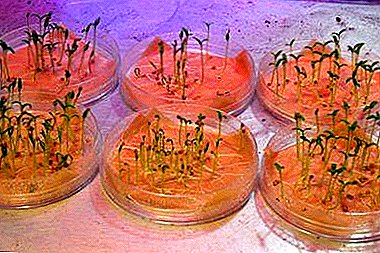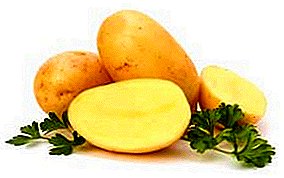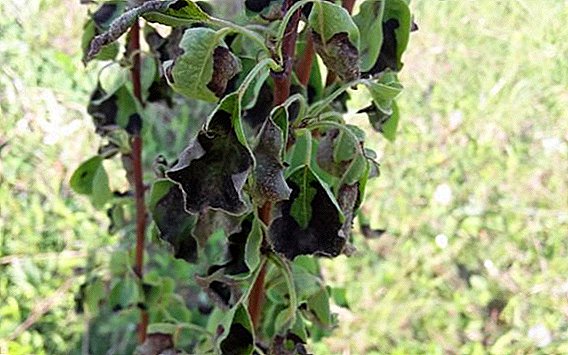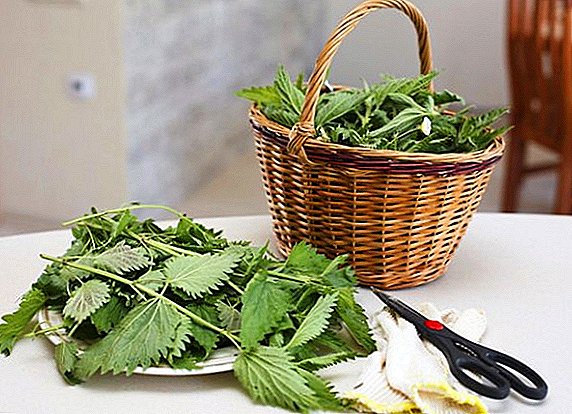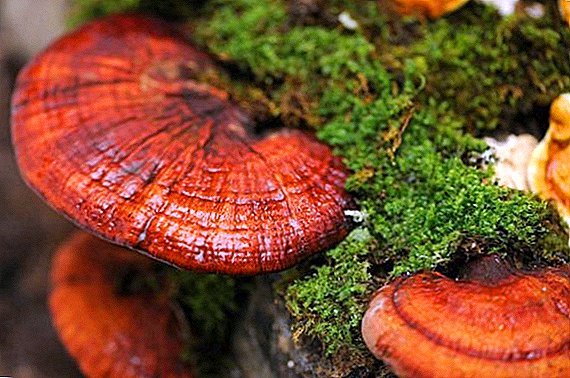
Aphid is a familiar annoying insect that affects all cultures found in its path. From it, the plants are depressed, stop growing and often die.
If in your fight against insects, victory is not on your side, then this article is for you. In it, we will talk about how to effectively destroy and prevent further occurrence of aphids in your area.
Harm to plants from such insects
Some people underestimate the damage to plants, but in vain. Aphid sucks sap from stems, buds, leaves, the dehydrated parts die off, the danger of developing infectious and viral diseases increases (you can read about what aphids feed on here).
From where and where can appear?
Fertilized female lays eggs in secluded and hard to reach places.For example, on the branches and bark of trees, they can survive cold times and begin to grow rapidly in warm weather, about 150 new individuals appear every week and there can be up to 18 generations per season.
ATTENTION! Garden ants also tolerate aphids.
Read more about the habitat of aphids in this article.
How to recognize and what to do in the first place?
The following signs will help to recognize the presence of aphids in your garden:
- improperly developed buds;
- if you see white scales under the plants, you can be sure that aphid has started up on your garden plot;
- "Ant paths" around your plants;
- twisted and yellowed leaves.
First of all, you need to cut off the infected areas, if it is bushes or trees (how to deal with aphids on fruit trees, you can find here).
A photo
See how the insect looks in the photo:





Ways to deal with it
Chemical
This method is best addressed in the most extreme cases when the affected area has acquired significant proportions. Before you begin, you need to carefully study the instructions, because an increased dose can provoke the death of beneficial insects as well.To prevent aphid from becoming addicted to poison, alternate chemical solutions..
IMPORTANT! And do not forget that chemicals can be harmful to humans, so all work must be carried out in special clothes.
The effects on the body of the pest distinguish drugs:
- contact, acting directly on the whole body;
- systemic, when ingested, cause inevitable death;
- intestinal, causing poisoning, hitting the intestine;
- fumigants act through the respiratory tract.
Consider the most popular tools.
Actofit
Available in 40 ml sachets, in 900 ml and 4.8 liters canisters, in 40 and 200 ml bottles.
Act: getting into the body of aphids, causes paralysis and death occurs in 2-3 days.
Duration: valid for 2-3 weeks.
When to apply: the maximum effect is achieved in sunny, windless weather at temperatures above 18-20 degrees. Not recommended for use during flowering., as it has a detrimental effect on the bees.
Mode of application:
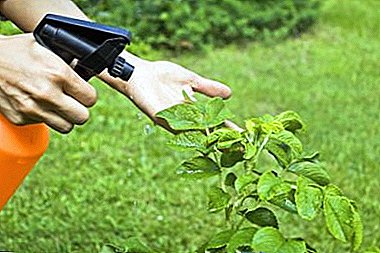 Add 8 ml of product to 1 liter of water and mix well.
Add 8 ml of product to 1 liter of water and mix well.- Pour the resulting solution into a spray bottle and treat the infected cultures.
For the final destruction of aphid, Actofit is recommended to be used twice a season, preferably with a break of two weeks. It should take at least two days from the date of the last spraying to harvest.
Toxicity: the drug belongs to the third class of toxicity, the danger to the human body is not. This does not release the need to carry out work in rubber gloves and a respirator.
ATTENTION! The remaining liquid can not be stored. The drug is dangerous to bees, but does not pollute the environment and is easily soluble in water.
Arrow
Available in small bags of 50 grams.
Action: absorbed into the leaves, from there it goes to the shoots and roots of the plant. After two days, the aphid dies completely.
Duration: the drug’s protective function lasts up to two to three weeks.
When to apply: at the first appearance of aphids on plants in the morning or in the evening in warm, windless weather.
Mode of application:
- Dissolve one sachet in 10 liters of water and mix thoroughly.
- Pour into sprayer and spray leaves of cultivated plants.
Toxicity: the drug belongs to the third class of toxicity. In applying it, you must not forget to wear gloves and special glasses. The drug is not dangerous to bees and fishas it is environmentally friendly.
There are also other effective drugs, such as:
- "Jaguar".
- "Fufanon."
- "Trichopol".
- "Virofarm".
Chemical means, even the best, should be resorted to only when other methods are useless, do not once again resort to chemistry.
Biological
 To plant lavender among roses (how to save a rose, if aphid has started up on it, you can read it here).
To plant lavender among roses (how to save a rose, if aphid has started up on it, you can read it here).- Plant dill, parsley and carrots in the garden, they will scare away the pests from your beds.
- Attract birds that feed on aphids (about who else feeds on aphids, read here).
- Sowing nasturtiums at tree trunks will distract the plant louse to the flowers and it will be more convenient to destroy it.
Biological agents are effective when the aphid begins to appear on the site. and has not yet spread over a large area.
Agrotechnical
- The most obvious method is weed control.
- Careful digging in spring and autumn to detect aphid larvae.
- The annual change of the place of planting of melons and planting in the inter-row of potato plants - natural enemies of aphids.
- Pruning of infected shoots and branches and their disposal.REFERENCE! In the process of burning, the larvae have no chance to survive.
- Pay attention to the appearance of ants. It is they who enter into a symbiosis with aphids (for more information about the symbiosis of ants with aphids, see here).
We propose to read how to deal with aphids by folk remedies, in this material, and here we told how to deal with white aphids on garden and indoor plants.
How to destroy a pest?
How to process chrysanthemum?
As a rule, aphids infect small leaves and unblown buds. At first glance, they can be overlooked. This is because they appear under the leaves and inside the buds. The following methods will help you get rid of this harmful insect:
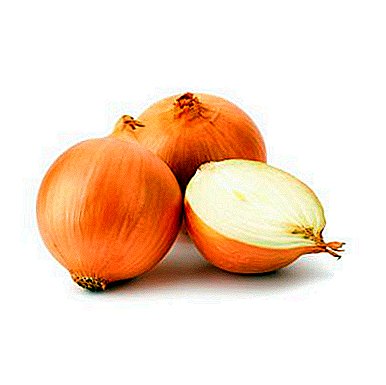 Onion Husk.
Onion Husk.At 0.5 kg of onion peel is taken 5-7 liters of water, it must be boiled, then cool and insist a few hours.
Strain and the resulting liquid can be used for spraying at any time of the year.
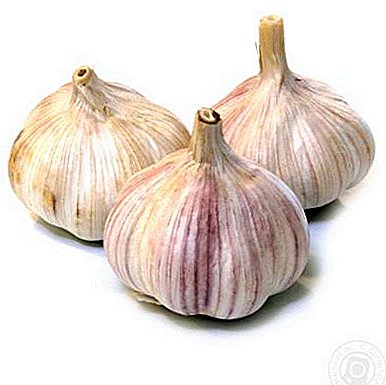 Garlic.
Garlic.Head garlic to clear, chop the cloves on a grater, pour a glass of water and insist about half an hour.
Infusion filter and dilute with clean water to a liter volume. This solution should be sprayed flowers during the day every 3-4 hours.
 Tobacco can help get rid of aphids.
Tobacco can help get rid of aphids.It must be scattered on the ground surface.
The smell and specific substances that penetrate into the plant, repel harmful insects.
Do not forget that it is undesirable to use this method if there are people in the house who suffer from allergies.
What measures to take if infected with dill?
If preventive measures such as weed control and harvesting dried fennel stalks did not help, then you should use these methods: you must use foliar feedings to increase the protective forces of dill.
ATTENTION! A solution of superphosphate and potassium chloride in a ratio of 2: 1 is diluted in 10 liters of water. They are sprayed with dill. Repeat the treatment after a week.
How to spray nymphs?
One of the effective methods is the cultivation of the larvae of ladybirds.. These are the natural enemies of aphids and feed on them (how to deal with aphids through ladybirds, read here).
Horsetail infusion:
- 500 grams of fresh grass is poured with 5 liters of water and left to infuse for a day.
- The resulting infusion is diluted with water in a ratio of 1: 4.
- Spray the resulting liquid 1-2 times every seven days.
How to remove the insect in the garden forever?
In order for your work not to be in vain and after a while the hordes of aphids did not fill up your plot again, from time to time it is worth carrying out maintenance work.
Prevention:
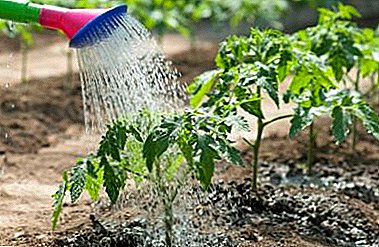 It is necessary to strengthen the immune system of plants. A good method for this is to water the crops with a decoction of nettles. You can also make timely feeding, but do not overuse and overdo it.
It is necessary to strengthen the immune system of plants. A good method for this is to water the crops with a decoction of nettles. You can also make timely feeding, but do not overuse and overdo it.- Planting herbs such as basil, coriander, mustard under the trees can be life-saving, because the bitter smell of these plants strongly repels aphids.
- Some of the biological methods described above can also be an excellent prevention of the appearance of aphids.
How to get rid in the greenhouse?
Important! In the greenhouse, you should regularly inspect the plants for aphids. It is much easier to get rid of it at the initial stage.
Ways to get rid of aphids in the greenhouse are:
- A simple and affordable tool: 1 teaspoon of vinegar per 1 liter of water and some liquid soap (use of dishwashing detergent is possible).
Spray each affected leaf on both sides with this solution. Treatment is carried out every 2 days. Further use as needed.
- It is necessary to fight against ants - spiders of aphids. You can use mustard powder, anti-ant chalk. Do not forget about regular weeding.
So, we have considered the most effective ways to combat such a pesky pest as aphid. It is important to timely detect aphid and start work on the cleanup of your site as soon as possible. Do not forget about preventive measures, because it is easier to prevent the appearance of aphids than to fight it afterwards and wonder why it is so difficult to breed and how to remove it completely from plants and the site.


 Add 8 ml of product to 1 liter of water and mix well.
Add 8 ml of product to 1 liter of water and mix well. To plant lavender among roses (how to save a rose, if aphid has started up on it, you can read it here).
To plant lavender among roses (how to save a rose, if aphid has started up on it, you can read it here). Onion Husk.
Onion Husk. Garlic.
Garlic. Tobacco can help get rid of aphids.
Tobacco can help get rid of aphids. It is necessary to strengthen the immune system of plants. A good method for this is to water the crops with a decoction of nettles. You can also make timely feeding, but do not overuse and overdo it.
It is necessary to strengthen the immune system of plants. A good method for this is to water the crops with a decoction of nettles. You can also make timely feeding, but do not overuse and overdo it.
